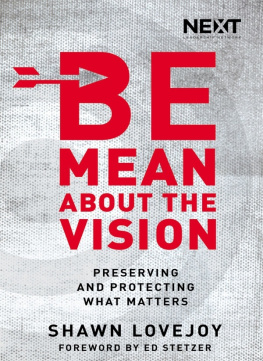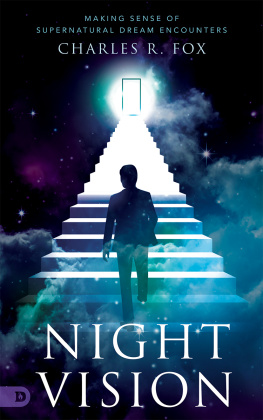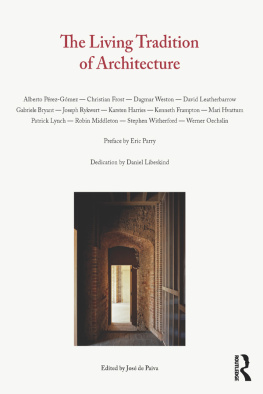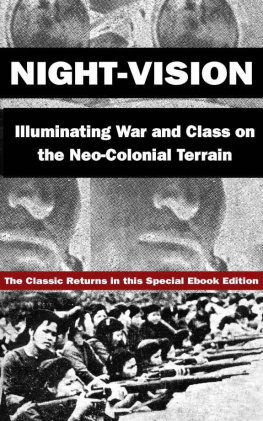Paiva - Night Vision
Here you can read online Paiva - Night Vision full text of the book (entire story) in english for free. Download pdf and epub, get meaning, cover and reviews about this ebook. year: 2013;2008, publisher: Chronicle Books LLC, genre: Romance novel. Description of the work, (preface) as well as reviews are available. Best literature library LitArk.com created for fans of good reading and offers a wide selection of genres:
Romance novel
Science fiction
Adventure
Detective
Science
History
Home and family
Prose
Art
Politics
Computer
Non-fiction
Religion
Business
Children
Humor
Choose a favorite category and find really read worthwhile books. Enjoy immersion in the world of imagination, feel the emotions of the characters or learn something new for yourself, make an fascinating discovery.

- Book:Night Vision
- Author:
- Publisher:Chronicle Books LLC
- Genre:
- Year:2013;2008
- Rating:3 / 5
- Favourites:Add to favourites
- Your mark:
- 60
- 1
- 2
- 3
- 4
- 5
Night Vision: summary, description and annotation
We offer to read an annotation, description, summary or preface (depends on what the author of the book "Night Vision" wrote himself). If you haven't found the necessary information about the book — write in the comments, we will try to find it.
Night Vision — read online for free the complete book (whole text) full work
Below is the text of the book, divided by pages. System saving the place of the last page read, allows you to conveniently read the book "Night Vision" online for free, without having to search again every time where you left off. Put a bookmark, and you can go to the page where you finished reading at any time.
Font size:
Interval:
Bookmark:
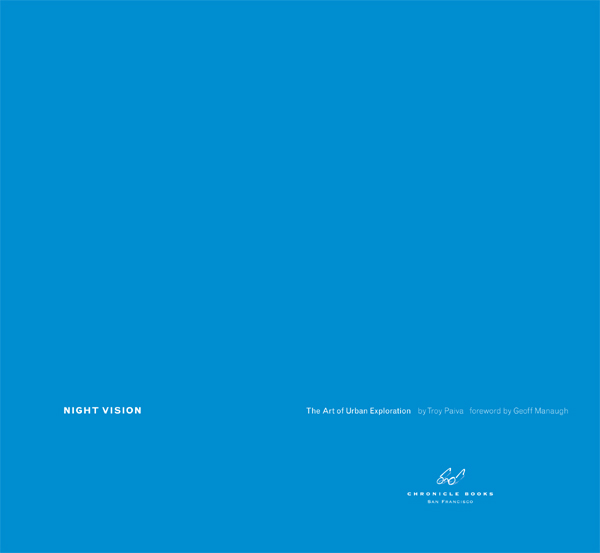
Photography and text copyright 2008 by Troy Paiva. Desert Iliad copyright 2008 by Geoff Manaugh. All rights reserved. No part of this book may be reproduced in any form without written permission from the publisher.
ISBN: 978-0-8118-7578-3
The Library of Congress has previously cataloged this title under ISBN: 978-0-8118-6338-4
Designed by Matthew Boyd and River Jukes-Hudson
Chronicle Books LLC
680 Second Street
San Francisco, California 94107
www.chroniclebooks.com
For Mom, who gave me the ability to see. For Dad, who gave me the love of machines.
Geoff Manaugh
In his now classic book The Rings of Saturn , author W. G. Sebald visits an abandoned military base on Englands East Anglian coast. The closer I came to these ruins, he writes, the more I imagined myself amidst the remains of our own civilization after its extinction in some future catastrophe. Sebald suggests that the derelict concrete structures left scattered here and there in the diffuse maritime light resembled temples or pagodas, even tombs, or the tumuli in which the mighty and powerful were buried in prehistoric times with all their tools and utensils, silver and gold.
Hiking through those coastal ruins alone, consumed by his own particular brand of awed Romanticism, Sebald even seems unsure the site had been constructed by humans at all. He soon becomes filled with the pervasive and unshakable sense that he is actually standing on ground intended for purposes transcending the profane. Indeed, wandering about among heaps of scrap metal and defunct machinery, the beings who had once lived and worked here were an enigma. What strange race would leave such spaces behind? Transformed now by time, weather, and the absence of basic maintenance, what were once buildings had become abstract mounds, suggestions of shapes, tumid outgrowths dotting the horizonnot architecture at all, then, but something more strange and inexplicable: structural blurs without identifiable purpose or history.
Such is the often unacknowledged appeal of destruction. Even the most familiar scenes, given time and allowed to collapse under their own weight, colonized by birds, rats, and vegetation, will become literally uncanny, somehow foreign to the very culture that constructed them.
Ruins have always had a certain emotional or artistic appeal; this is as true for wrecked airplanes as it is for Gothic cathedrals. We no longer need to visit the fallen domes and rain-stained masonry of churches in rural Europe, or even the old stone temples of Angkor Wat, to see ever-widening cracks in the faade of human settlement. We simply have to drive to the other side of town or walk past boarded-up storefronts after dusk.
We are surrounded by ruins its just a question of noticing them.
In Troy Paivas work we see the wrecked urban edges and unpopulated landscapes of the American West. The 20th century, as his photographs show, produced its own spectacular, seemingly posthuman ruins. In the cities, deserts, and hills of California, extending out to the bleached margins of the state and into Nevada, Arizona, and Utah, passing east along arterial highways into Texas, we have inherited a semi-toxic world of old military equipment and abandoned shopping mallswastefully complex and tinged with melancholy, but gorgeous nonetheless.
Paivas images of airplane graveyards, in particular, are all the more evocative and gripping when you consider that his father was a flight engineer, hopping planes from country to country. In his book The Atrocity Exhibition , J. G. Ballard describes a surreal landscape of crashed bombers, abandoned air warfare ranges, and disused runways. He refers to such images as the nightmare of a grounded pilot, or the suburbs of Hell, a University of Death, across which people wander, stunned by the ruins all around them.
It seems obvious to point out here that if the Romantics, for instance, had written their poems in a different geographic or historical contextif they had grown up in detached houses on cul-de-sacs at the sprawling outer rim of Californias desert suburbia, in Palmdale, or outside Bakersfieldthen they may not have planned their famously poetic trips to see the picturesque remains of shattered abbeys lost in mist. But the quasi-archaeological eyes of those poets and artists would still be enraptured today. Wordsworth could very well have gone out at 2 AM on a weeknight to see the cracked windshields of car wrecks on the sides of desert roads, new ruins from a different and arguably more interesting phase of Western civilization. Or perhaps someone like Caspar David Friedrich would, even now, be climbing through the shells of abandoned hotels, stopping to snap a few pictures beneath the weathered plywood screens of drive-in cinemas, exploring those archaeologies so particular to our own point in history. Instead of tours through Classical ruins on the outskirts of Athens and Rome, they would be urban explorers of concrete blocks and two-by-fours, following train tracks through the dirt.
After all, we live in an unexpected golden age for dereliction. Todays accelerated rate of replacement just means we have more and more things to leave behindand this ever-growing trail of wreckage, Paivas work shows, leads full circle and around again, back to the very heart of the American dream. This book documents the architectural discard pile of a whole nation, an orphaned version of ourselves that we no longer want or need, some long-lost twin of the present moment cut adrift to wander alone in the empty.
Hike far enough and youll find yesterday; its sitting at the end of the street or on the other side of that mountain rangeand tomorrow is right next to it. Time is a landscape.
People may go into the desert to rid themselves of thingsto be rid of themselves, perhapsbut what they thought theyd left behind now resides out there, unclaimed, camouflaged rather than truly surrendered. You throw something away on the road out of town and it remains there, unintentionally exhibited for the next generation, and the next, and the next. Even cigarette butts become evidence for a future archaeology, the whole landscape now a museum of forgotten objects, temporarily covered then revealed again by shifting sandand all of it is so dark we must cast our own lights so that we can illuminate these traces more fully.
Among other things, Paivas photographs show that even decay can last, ironically, becoming monumental in its own right. That specific gas station or factory, those particular rooms and warehouses, may even disappear just days after he has visited thembut the process of decay remains, that slow destruction settled there like a virus inside the landscape, structurally active behind the surface of new frontages and fresh paint. Decay, strangely, gives the past a new, unearthly future, signs of an older world transformed.
Paiva shows us what historical dead ends actually look like: cities reduced to shells, their buildings empty, a planet devoid of inhabitants. Yet, for all its melancholy, this book is meditative. We stare at the abandoned cranes, barns, and villages, the rusting infrastructures of a civilization whose sole purpose now is to waste away, eroding down to another stage of itself. It is a military/industrial sublime . And there is calm in thatan inevitability, a mythology we might even find ourselves looking forward to.
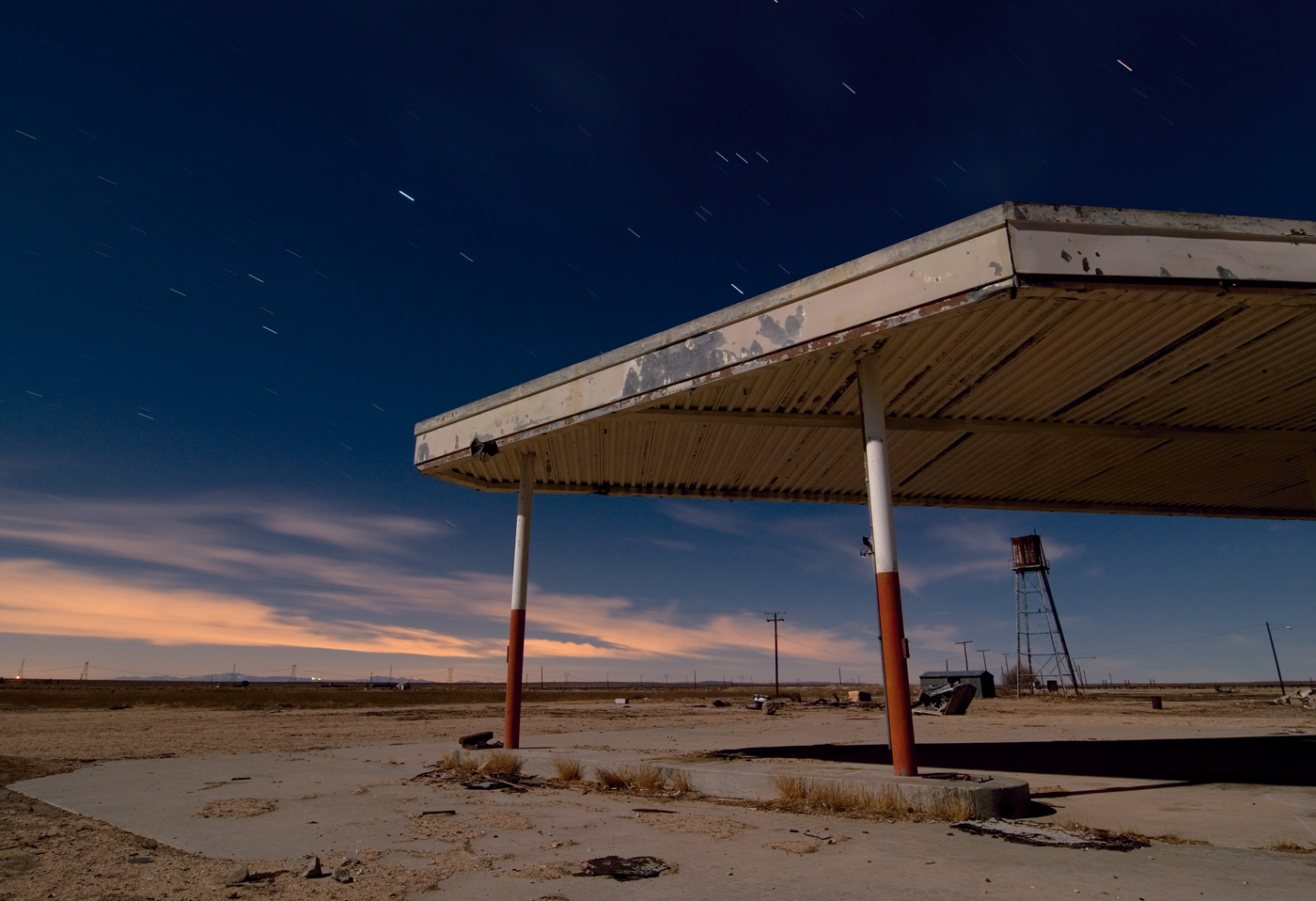
Sodium Clouds, 2007 .
The pump island at the forgotten Lockhart Ranch general store and gas station in Lockhart, California. Seventy-five miles away, the Los Angeles metroplex lights up the clouds.
Font size:
Interval:
Bookmark:
Similar books «Night Vision»
Look at similar books to Night Vision. We have selected literature similar in name and meaning in the hope of providing readers with more options to find new, interesting, not yet read works.
Discussion, reviews of the book Night Vision and just readers' own opinions. Leave your comments, write what you think about the work, its meaning or the main characters. Specify what exactly you liked and what you didn't like, and why you think so.

